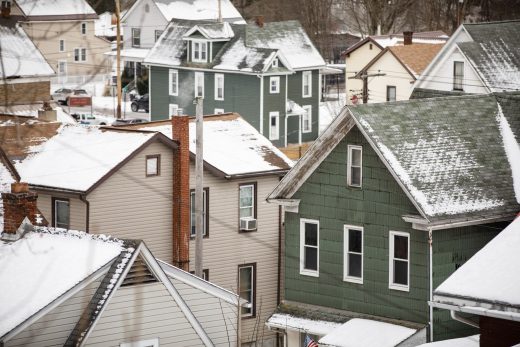Spotlight PA is an independent, nonpartisan, and nonprofit newsroom producing investigative and public-service journalism that holds power to account and drives positive change in Pennsylvania. Sign up for our free newsletters.
By Charlotte Keith | Spotlight PA
A popular program that helps Pennsylvania homeowners with the cost of essential repairs did not receive more funding in this year’s state budget, despite overwhelming demand in many counties.
Almost 18,200 homeowners who applied for help from the Whole-Home Repairs program were waitlisted because of a lack of available funding, according to a survey by the Department of Community and Economic Development this spring.
“We’re very disappointed — more than disappointed,” said Rachel Goodgal, government affairs manager at the Keystone Energy Efficiency Alliance, a trade association that advocated for the program to receive more funding.
“I think most of the rank-and-file legislators can see that it has many benefits and is valuable to their constituents.”
The Whole-Home Repairs program was created in 2022 with bipartisan support and $125 million in federal pandemic aid. The money helps homeowners fix major problems like leaking roofs and broken windows and can also be used to make properties more energy-efficient or accessible for people with disabilities. Eligibility is determined by income.
Pennsylvania has some of the oldest housing stock in the U.S. As of 2022, a quarter of occupied housing units in the state were in structures built before 1940, a recent state study found.
Democratic Gov. Josh Shapiro’s budget proposal included an additional $50 million for the program, which he has called “off the charts successful.” But the final budget deal negotiated with the divided state legislature did not include money for the program.
The immediate impact will vary from county to county. Some have already given out all the available funding, while others opened applications more recently and still have money left.
“By blocking funding this year, Republicans have left thousands more families vulnerable,” Mary Collier, a spokesperson for Pennsylvania Stands Up, a progressive advocacy group, said in a statement. “You block funding to a program when you are trying to kill it.”
Kate Flessner, a state Senate GOP spokesperson, said in a statement that while many programs sought funding in this year’s budget process, “the substantial investments made for education funding and human service programs became the focus.”
It’s not the first time lawmakers have been unable to agree on directing more money toward the home repair program. It was due to receive $50 million in last year’s state budget, but lawmakers failed for months to reach a deal on additional legislation to authorize that spending. The final deal on those bills, reached in December, did not include more funding for the program.
Some of the opposition this year sprang from Senate Republicans’ concerns over replacing one-time federal funding with state dollars, said state Sen. Nikil Saval, a progressive Democrat from Philadelphia who first proposed the initiative.
This year’s budget cycle has been marked by partisan disagreements over how much of Pennsylvania’s $14 billion budget surplus to spend, with Democrats calling for more state investment and Republicans tending to oppose increased spending.
Supporters argue the program ultimately saves money by helping prevent homelessness and allowing older residents to stay in their homes longer.
In many counties, the demand for funding has been enormous.
Dauphin County closed applications after only four hours, while Indiana County received three times as many applications as it could cover.
Allegheny County received more than 4,000 applications from eligible homeowners, but could fund only about 4%, an administrator told Democratic lawmakers at a hearing earlier this year.
Most of the work paid for by the program addresses “significant system failures” that could otherwise result in the properties becoming vacant, Dan Sullivan, who works at the nonprofit overseeing the county’s program, said at the hearing.
“There is a huge trickle-down effect if we cannot fix these homes.”
This year’s budget does include a major funding increase for a separate state program that offers flexible grants to local governments, nonprofits, and developers to build affordable housing, among other uses. Funding for the program will increase from $70 million in the current fiscal year to $100 million by 2027.
Aaron Zappia, director of government affairs at the Housing Alliance of Pennsylvania, called the increase “monumental.” As the state’s housing crisis has worsened in recent years, state lawmakers have begun showing a new level of interest, he said.
The budget also includes smaller allocations for homeless assistance, legal representation for tenants facing eviction proceedings, and a new emergency housing program for local governments.
Supporters of the Whole-Home Repairs program say they plan to keep pushing for more money, arguing that the demand for the funding demonstrates the need for a long-term solution.
Zappia said state programs often grow in fits and starts, but said he would be surprised if lawmakers don’t ultimately agree to invest more in the program.
“My sense is: at the end of the day, they’ll find some funding for it,” he said.
BEFORE YOU GO… If you learned something from this article, pay it forward and contribute to Spotlight PA at spotlightpa.org/donate. Spotlight PA is funded by foundations and readers like you who are committed to accountability journalism that gets results.









